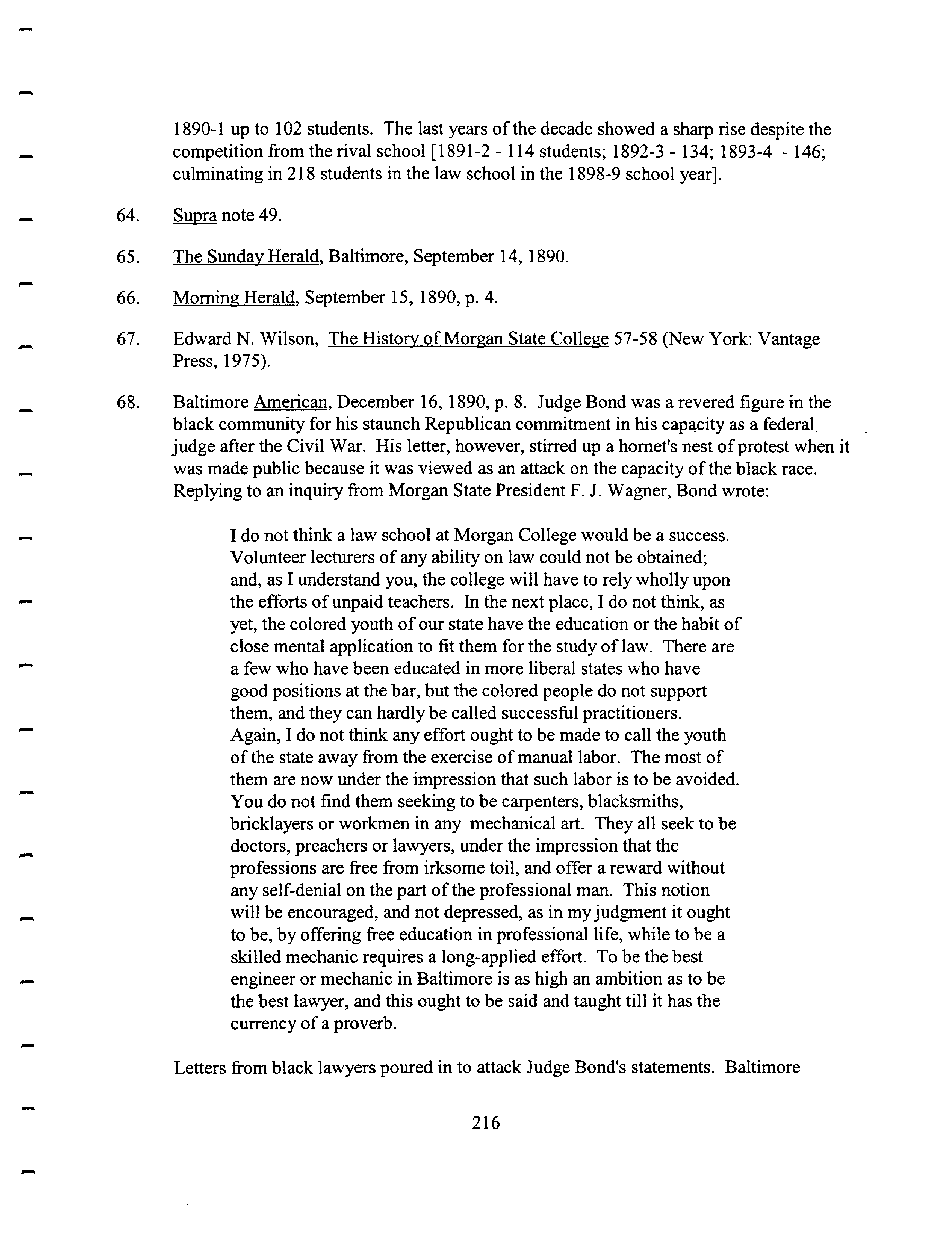|
1890-1 up to 102 students. The last years of the decade showed a sharp rise despite the
competition from the rival school [1891-2 - 114 students; 1892-3 - 134; 1893-4 - 146;
culminating in 218 students in the law school in the 1898-9 school year].
64. Supra note 49.
65. The Sunday Herald. Baltimore, September 14, 1890.
66. Morning Herald. September 15,1890, p. 4.
67. Edward N. Wilson. The History of Morgan State College 57-58 (New York: Vantage
Press, 1975).
68. Baltimore American. December 16,1890, p. 8. Judge Bond was a revered figure in the
black community for his staunch Republican commitment in his capacity as a federal
judge after the Civil War. His letter, however, stirred up a hornet's nest of protest when it
was made public because it was viewed as an attack on the capacity of the black race.
Replying to an inquiry from Morgan State President F. J. Wagner, Bond wrote:
I do not think a law school at Morgan College would be a success.
Volunteer lecturers of any ability on law could not be obtained;
and, as I understand you, the college will have to rely wholly upon
the efforts of unpaid teachers. In the next place, I do not think, as
yet, the colored youth of our state have the education or the habit of
close mental application to fit them for the study of law. There are
a few who have been educated in more liberal states who have
good positions at the bar, but the colored people do not support
them, and they can hardly be called successful practitioners.
Again, I do not think any effort ought to be made to call the youth
of the state away from the exercise of manual labor. The most of
them are now under the impression that such labor is to be avoided.
You do not find them seeking to be carpenters, blacksmiths,
bricklayers or workmen in any mechanical art. They all seek to be
doctors, preachers or lawyers, under the impression that the
professions are free from irksome toil, and offer a reward without
any self-denial on the part of the professional man. This notion
will be encouraged, and not depressed, as in my judgment it ought
to be, by offering free education in professional life, while to be a
skilled mechanic requires a long-applied effort. To be the best
engineer or mechanic in Baltimore is as high an ambition as to be
the best lawyer, and this ought to be said and taught till it has the
currency of a proverb.
Letters from black lawyers poured in to attack Judge Bond's statements. Baltimore
216
�
|

